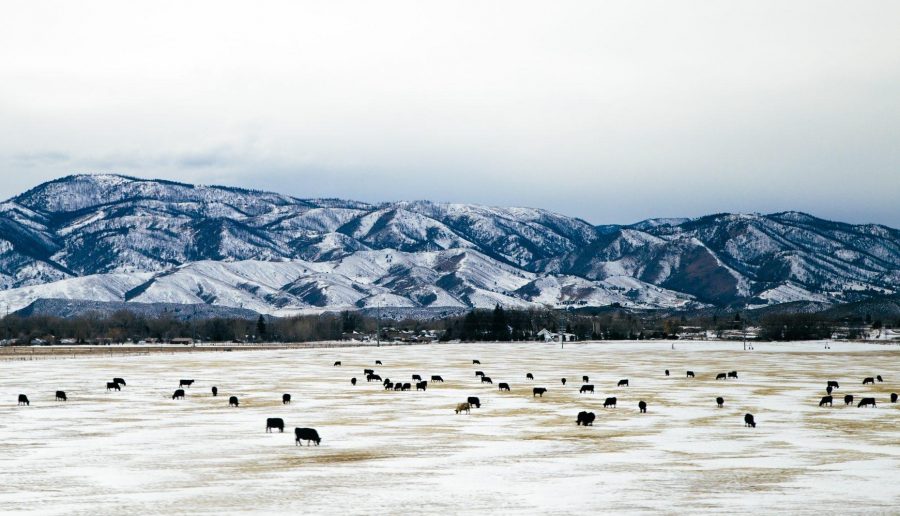In my friends’ winter Facebook posts I often see a familiar sight: a small calf lying on the floor of an entryway or bathroom, wrapped up in blankets next to a heater, usually with a small child seated close by to comfort the chilly bovine. It always reminds me of my childhood on the farm.
It’s the perfect representation of the care that goes into raising farm animals.
Still, farmers and ranchers receive criticism every winter for leaving their livestock out in the freezing weather. Since the frost rolled in, I’ve seen countless pictures on social media of animals covered in snow with captions stating, “If you’re cold, they’re cold.”
Now, I get where they’re coming from. Venturing out into negative 30-degree temperatures is something I avoid at all costs, but then again, I don’t have 6-millemeter thick skin and a warm winter coat.
As I mentioned before, cattle do get cold, but newborn calves are more susceptible than their 1,200 -pound mothers. When they are born in cold weather calves are wet, small and can easily contract respiratory diseases at best and at worst, succumb to hypothermia.
This can also happen to adult cattle when weather conditions are wet and cold. Wet hair combined with cold temperatures increase the chances of respiratory diseases, but cattle with a thick and dry winter coat can easily stay comfortable in cold temperatures.
According to the University of Nebraska-Lincoln, cattle with a heavy, dry winter coat and adequate body condition have a critical temperature of 19 degrees Fahrenheit. This means the cattle will not need to increase their energy requirements until the temperature drops below 19 degrees.
With recent temperatures plummeting below zero, those energy requirements increase immensely. Cattle need to consume a higher energy diet to maintain good health and body condition, which is why most ranchers supplement their winter feed with corn or soy hulls.
Farmers also provide natural and man-made shelters for their livestock when the weather is bad. Especially in western South Dakota or places with similar landscapes, pastures are full of hills and small valleys where cattle can hunker down out of the wind.
In blizzard conditions, when cows are at risk, farmers take extra measures to ensure the herd stays safe and healthy. Extra feeding before the storm, added herd checks and moving cattle to a pasture closer to home are common practices used to keep them safe in bad weather.
Small groups of cattle can also be brought inside barns or sheds when staying outside is unsafe for them – but according to charts from Iowa State University, this isn’t necessary until temperatures reach 30 to 40 degrees below zero.
Calves born in extreme weather are sometimes picked up by ranchers and brought into the house or put in warming boxes if they seem too cold to stay outside. Once they warm up and are no longer at risk of freezing, calves are returned to their mothers.
Cattle are naturally equipped to withstand our extreme South Dakota winters, but when genetics aren’t enough, farmers and ranchers provide extra care for their livestock in frigid conditions.
So, when temperatures are low and cattle seem to have been left out in the cold, remember, just because you’re freezing doesn’t mean they are, too.
Katie Berndt is an agricultural communications major and can be reached at
katelyn.berndt@jacks.sdstate.edu.



















